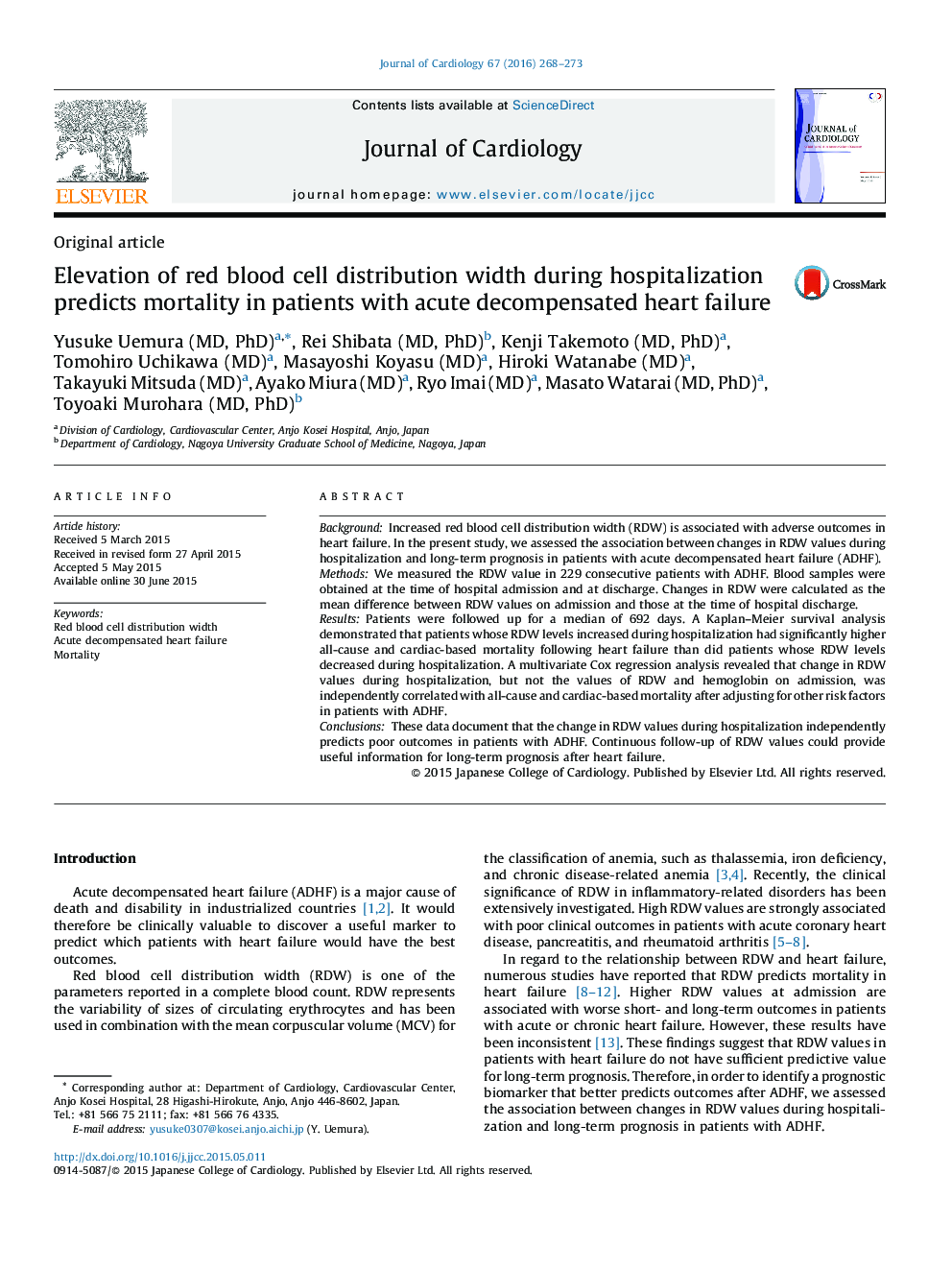| Article ID | Journal | Published Year | Pages | File Type |
|---|---|---|---|---|
| 2962739 | Journal of Cardiology | 2016 | 6 Pages |
BackgroundIncreased red blood cell distribution width (RDW) is associated with adverse outcomes in heart failure. In the present study, we assessed the association between changes in RDW values during hospitalization and long-term prognosis in patients with acute decompensated heart failure (ADHF).MethodsWe measured the RDW value in 229 consecutive patients with ADHF. Blood samples were obtained at the time of hospital admission and at discharge. Changes in RDW were calculated as the mean difference between RDW values on admission and those at the time of hospital discharge.ResultsPatients were followed up for a median of 692 days. A Kaplan–Meier survival analysis demonstrated that patients whose RDW levels increased during hospitalization had significantly higher all-cause and cardiac-based mortality following heart failure than did patients whose RDW levels decreased during hospitalization. A multivariate Cox regression analysis revealed that change in RDW values during hospitalization, but not the values of RDW and hemoglobin on admission, was independently correlated with all-cause and cardiac-based mortality after adjusting for other risk factors in patients with ADHF.ConclusionsThese data document that the change in RDW values during hospitalization independently predicts poor outcomes in patients with ADHF. Continuous follow-up of RDW values could provide useful information for long-term prognosis after heart failure.
